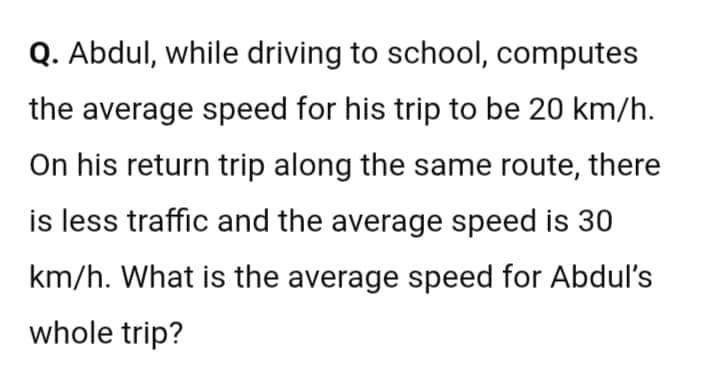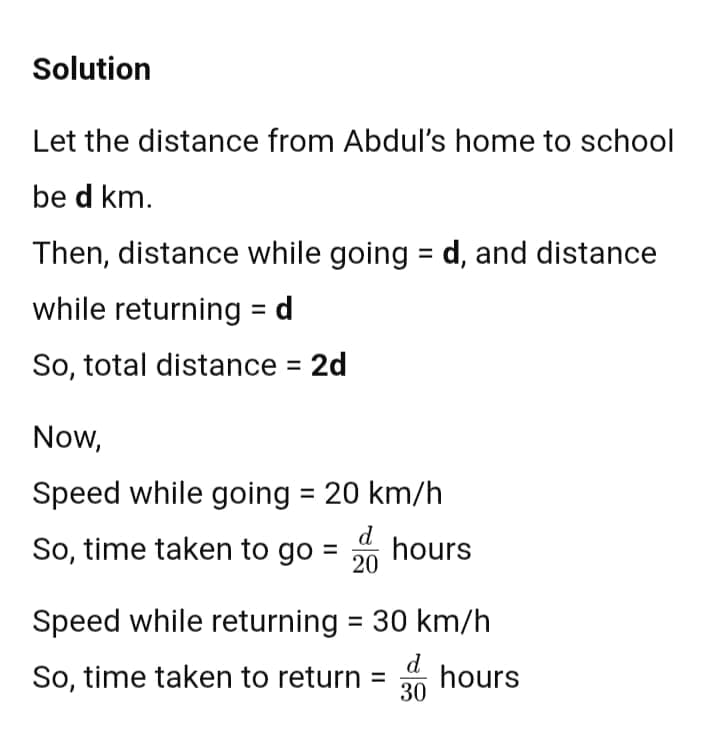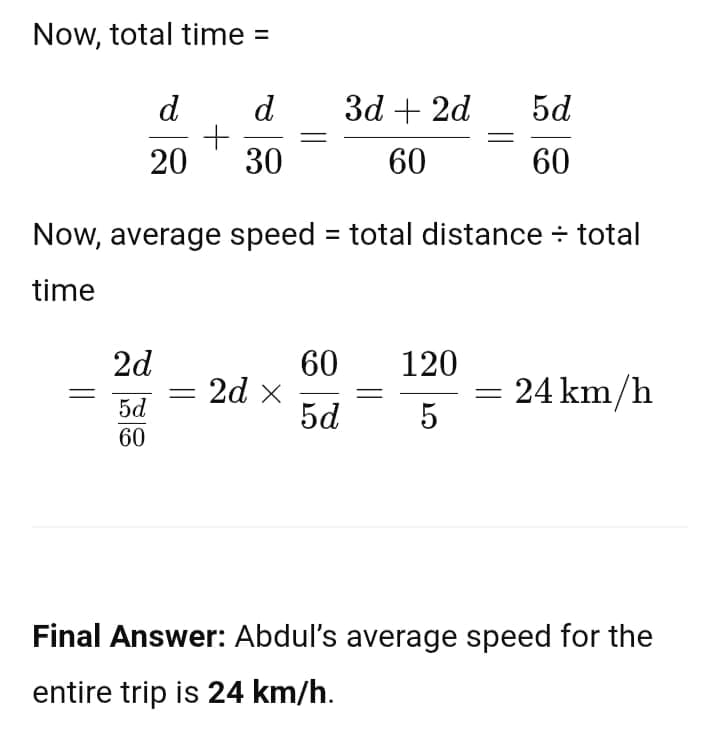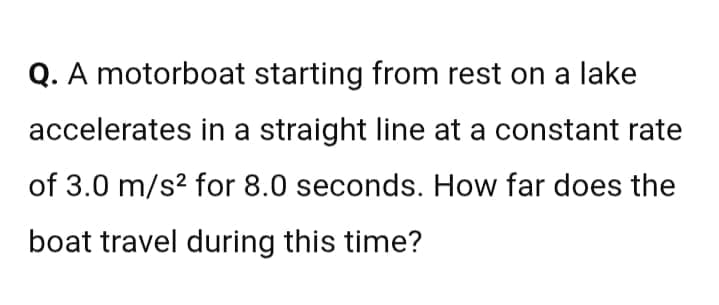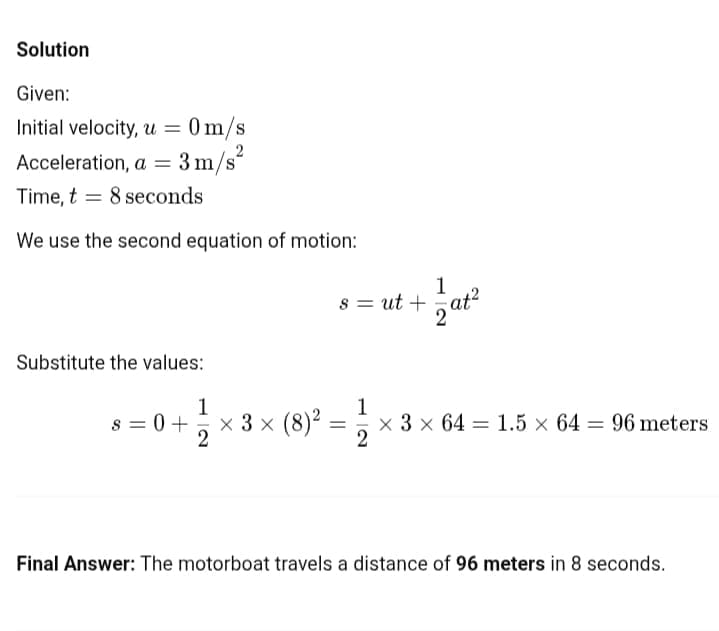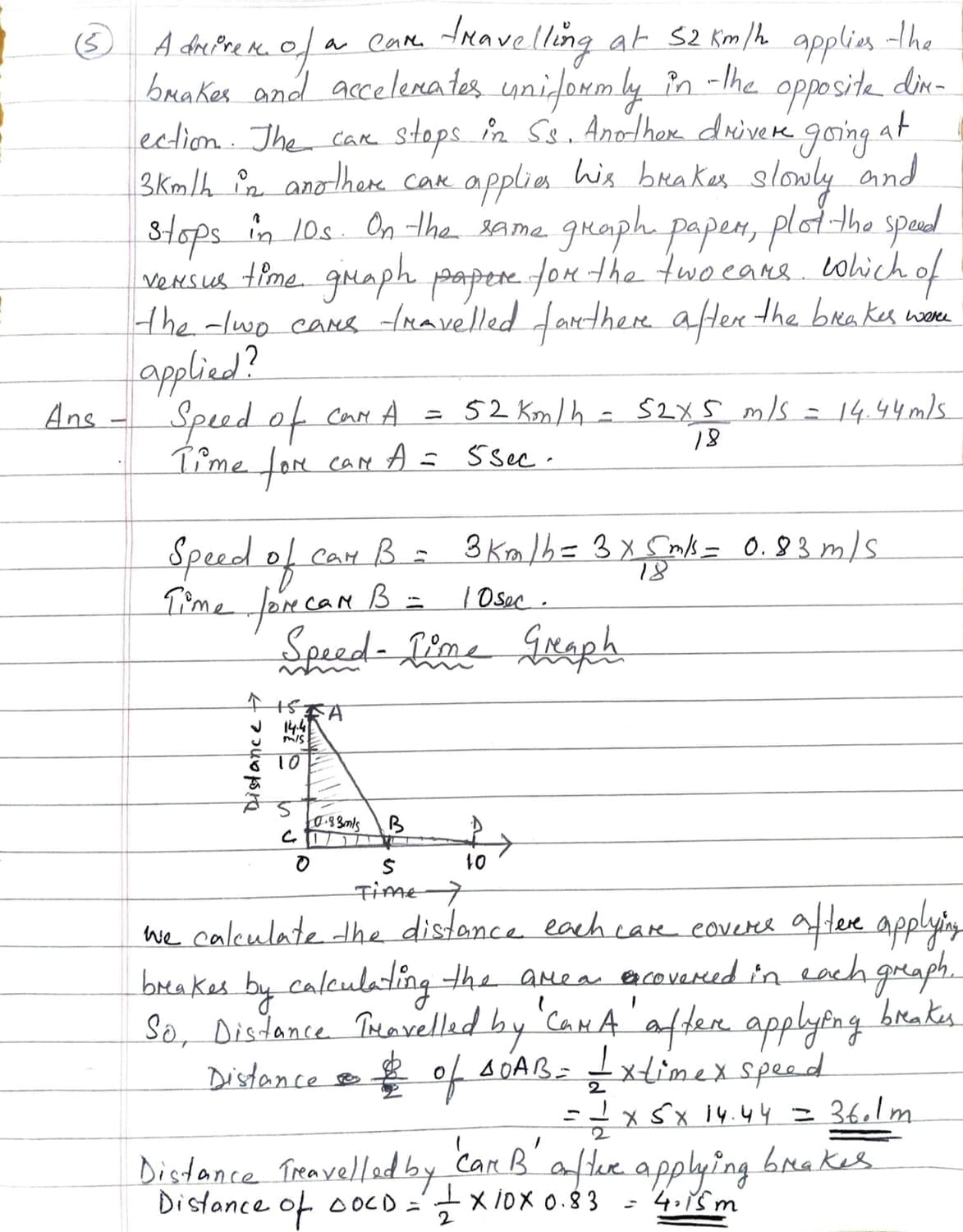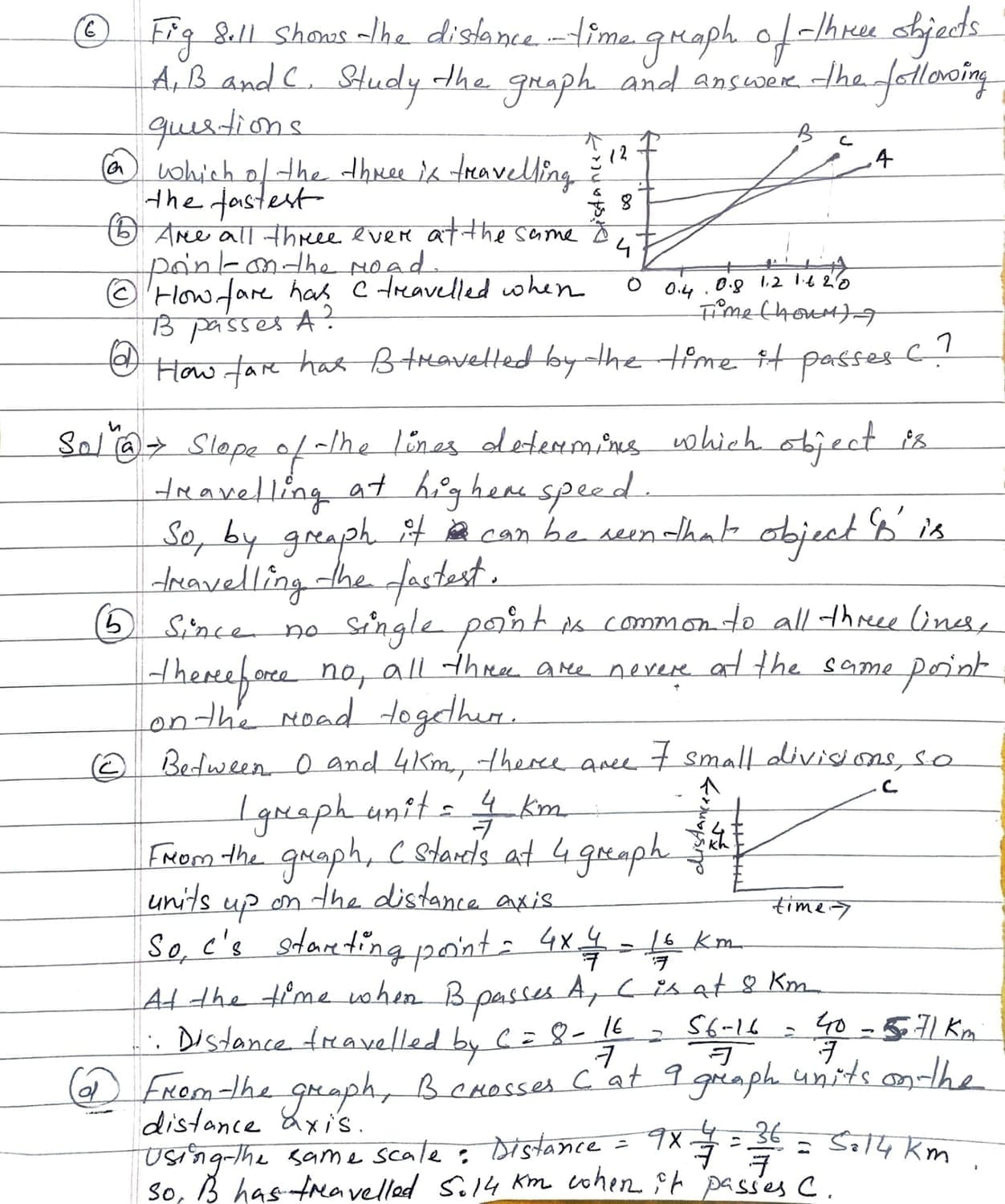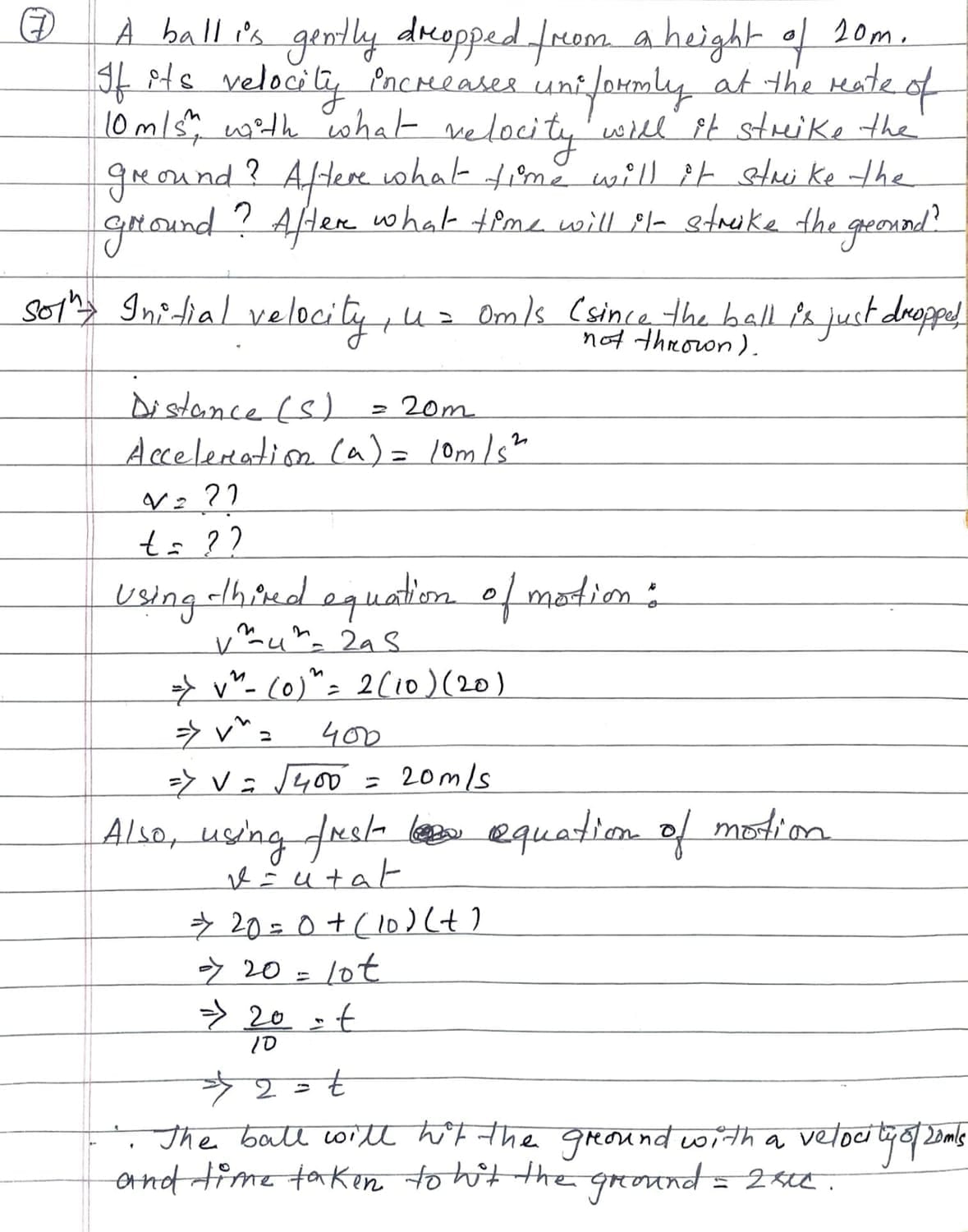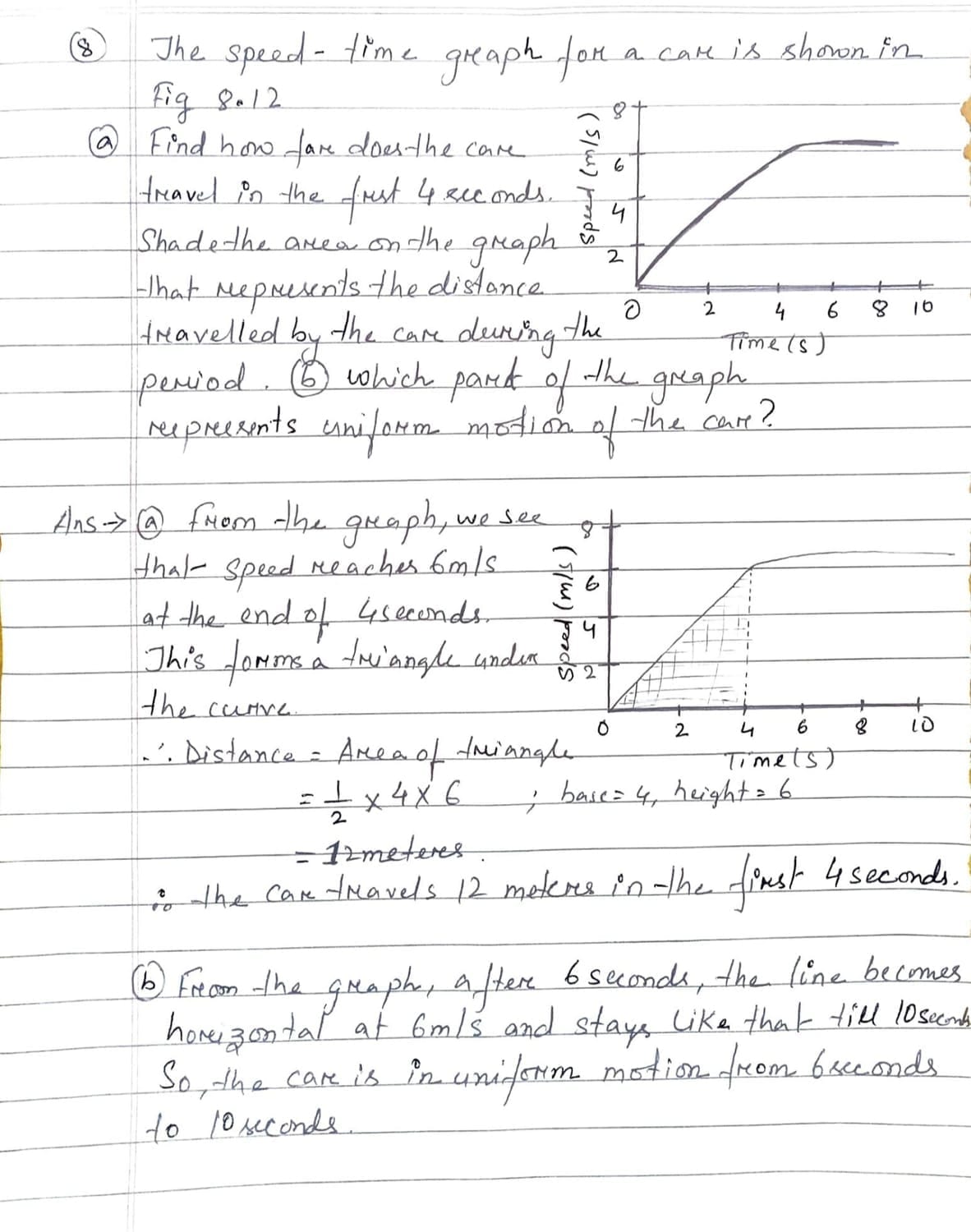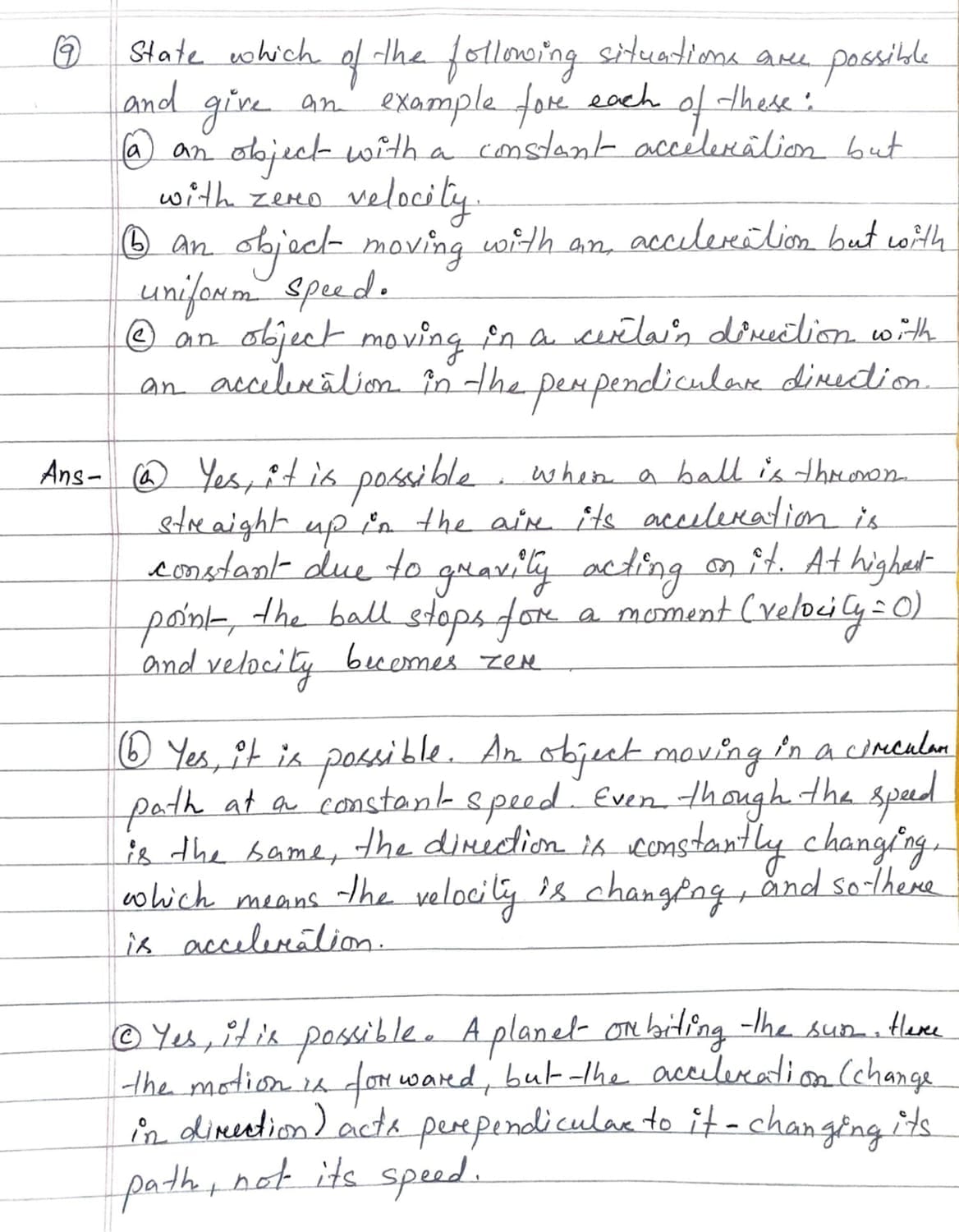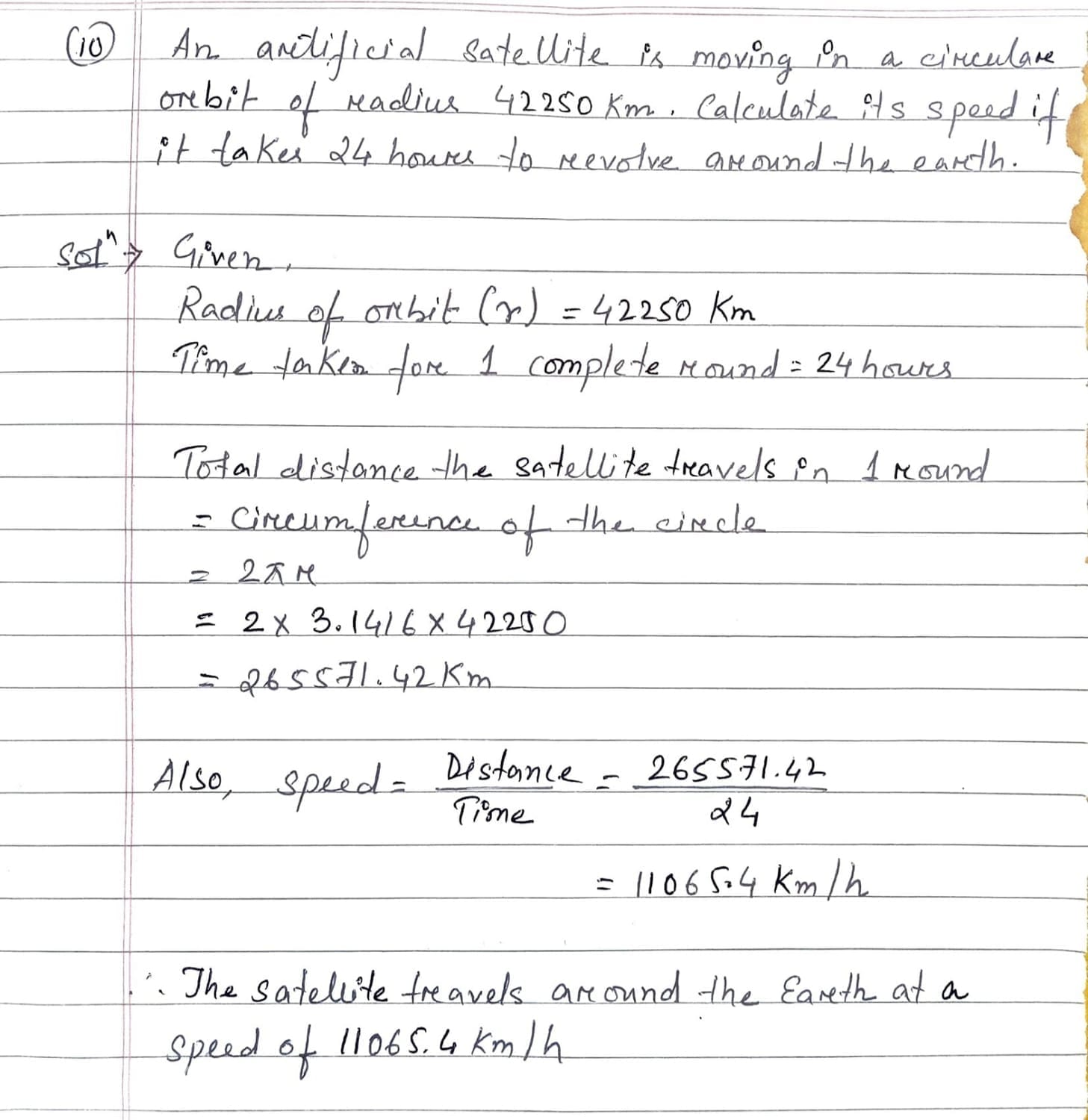NCERT Solutions for Class 9 Science Chapter 8: Motion
PAGE NO- 100
Q1. An object has moved through a distance. Can it have zero displacement? If yes, support your answer with an example.
Answer:
Yes, an object can move through a distance and still have zero displacement if it comes back to its starting point.
Example:
If we walk around a circular track and return to the same point where we started, the total distance we covered is not zero, but our displacement is zero because there is no change in position.
Q2. A farmer moves along the boundary of a square field of side 10 m in 40 seconds. What will be the magnitude of displacement of the farmer at the end of 2 minutes 20 seconds from his initial position?
Answer:
We are given:
· Side of the square field = 10 m
· Perimeter of the square = 4 × 10 = 40 m
· Time to complete one round = 40 seconds
So, the farmer covers 1 meter in 1 second.
Now,
Time = 2 minutes 20 seconds = 140 seconds
So, total distance covered = 1 m/sec × 140 sec = 140 meters
Now,
Number of rounds = 140 ÷ 40 = 3.5 rounds
That means after 3 full rounds, the farmer is back at the starting point.
Then he walks half a round more, which takes him to the opposite corner of the square field.
In this case, the displacement will be the diagonal of the square.
Using Pythagoras theorem:
Displacement = √(10² + 10²) = √(100 + 100) = √200 = 10√2 = 14.14 m
Q3. Which of the following is true for displacement?
(a) It cannot be zero.
(b) Its magnitude is greater than the distance travelled by the object.
Answer:
Both statements are false.
(a) is false because displacement can be zero. For example, if we go from a place and come back to the same point, the displacement is zero even though we have travelled a distance
(b) is false because displacement is never greater than distance. It can be equal to or less than the distance travelled, but never more.
PAGE NO- 102
1. Distinguish between speed and velocity.
Answer:

Q2. Under what condition(s) is the magnitude of average velocity of an object equal to its average speed?
Answer:
The magnitude of average velocity and average speed will be the same when an object moves in a straight line and does not change direction.
This is because in that case, the total distance and the displacement are equal.
Q3. What does the odometer of an automobile measure?
Answer:
An odometer is a device in a vehicle that measures the total distance travelled. It works by counting how many times the wheels rotate and uses that to calculate how far the vehicle has gone.
Q4. What does the path of an object look like when it is in uniform motion?
Answer:
When an object is in uniform motion, it moves at the same speed in the same direction. So, its path is a straight line.
Q5. During an experiment, a signal from a spaceship reached the ground station in five minutes. What was the distance of the spaceship from the ground station? (Speed of signal = 3 × 10⁸ m/s)
Answer:
We are given:
· Time = 5 minutes = 5 × 60 = 300 seconds
· Speed of the signal = 3 × 10⁸ m/s
Now,
Distance = Speed × Time
= 3 × 10⁸ × 300
= 9 × 10¹⁰ meters
So, the distance of the spaceship from the ground station is 9 × 10¹⁰ m.
PAGE NO- 103
Q1. When will you say a body is in
(i) uniform acceleration?
(ii) non-uniform acceleration?
Answer:
(i) Uniform acceleration:
When an object’s velocity increases or decreases by the same amount in equal time intervals, it is said to be in uniform acceleration.
Example: A freely falling object.
(ii) Non-uniform acceleration:
When an object’s velocity changes by different amounts in equal time intervals, it is said to be in non-uniform acceleration.
Example: A bus increasing speed while leaving a bus stop.
Q2. A bus decreases its speed from 80 km/h to 60 km/h in 5 seconds. Find the acceleration of the bus.
Answer:
We are given:
· Initial speed (u) = 80 km/h = 80 × 1000 / 3600 = 22.22 m/s
{or can be written as 80km/h= 80*5/18=22.22}
· Final speed (v) = 60 km/h = 60 × 1000 / 3600 = 16.66 m/s
{or can be written as 60km/h= 60*5/18=16.66m/s}
· Time (t) = 5 seconds
Now we use the formula:
Acceleration (a) = (v – u) / t
Substituting the values:
a = (16.66 – 22.22) / 5
a = –5.56 / 5
a = –1.11 m/s²
So, the acceleration of the bus is –1.11 m/s²
(Negative sign means the bus is slowing down.)
Q3. A train starting from a railway station and moving with uniform acceleration attains a speed of 40 km/h in 10 minutes. Find its acceleration.
Answer:
We are given:
· Initial velocity, u = 0 m/s (since the train starts from rest)
· Final velocity, v = 40 km/h = 40 × (1000 ÷ 3600) = 11.11 m/s
· Time, t = 10 minutes = 10 × 60 = 600 seconds
Now using the formula:
v = u + at
Substitute the values:
11.11 = 0 + a × 600
⇒ a = 11.11 ÷ 600
⇒ a = 0.0185 m/s²
So, the acceleration of the train is 0.0185 m/s².
PAGE NO- 107
Q1. What is the nature of the distance-time graphs for uniform and non-uniform motion of an object?
Answer:
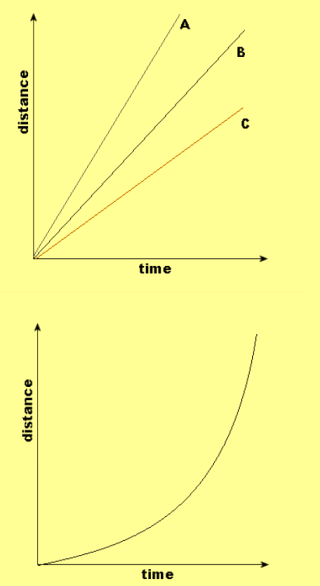
· In uniform motion, the object covers equal distances in equal intervals of time. So, the distance-time graph is a straight line. (See the first graph: Lines A, B, and C show different constant speeds.)
· In non-uniform motion, the object covers unequal distances in equal intervals of time. So, the distance-time graph is a curved line. (See the second graph: The curve shows increasing speed with time.)
👉 Conclusion:
· Straight line → Uniform motion
· Curved line → Non-uniform motion
Q2. What can you say about the motion of an object whose distance-time graph is a straight line parallel to the time axis?
Answer:
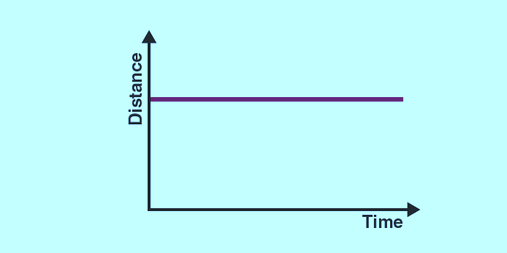
If the distance-time graph is a straight horizontal line (parallel to the time axis), it means that the distance of the object is not changing with time.
👉 So, the object is not moving and is at rest.
📌 In simple words:
The object stays at the same place as time passes.
Q3. What can you say about the motion of an object if its speed-time graph is a straight line parallel to the time axis?
Answer:
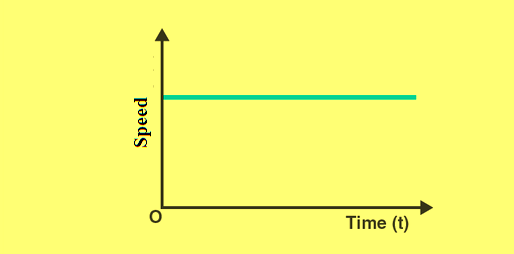
If the speed-time graph is a straight horizontal line (parallel to the time axis), it means that the speed of the object remains the same over time.
👉 This means the object is moving with a uniform (constant) speed.
📌 In short:
No change in speed = Uniform motion
Q4. What is the quantity which is measured by the area occupied below the velocity-time graph?
Answer:
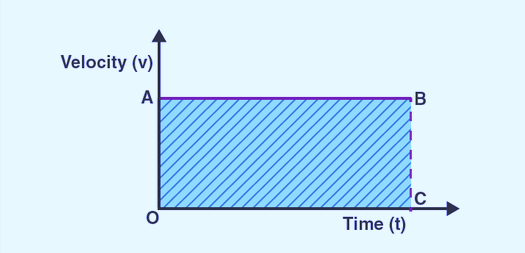
The area under a velocity-time graph represents the displacement of the object.
Let us consider an object moving with uniform velocity. Its velocity-time graph looks like a rectangle as shown below:
📊 In the graph:
· OA = velocity (v)
· OC = time (t)
· The area under the graph = area of rectangle OABC
📐 Area of rectangle OABC = OA × OC = velocity × time
➡️ Displacement = velocity × time
So, the area under the velocity-time graph gives the displacement of the object.
PAGE NO- 109/110
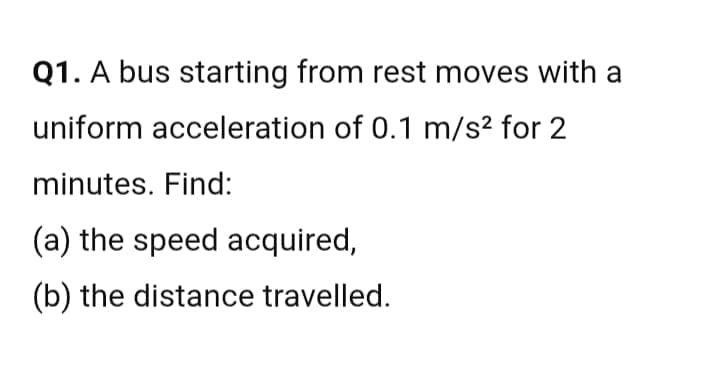
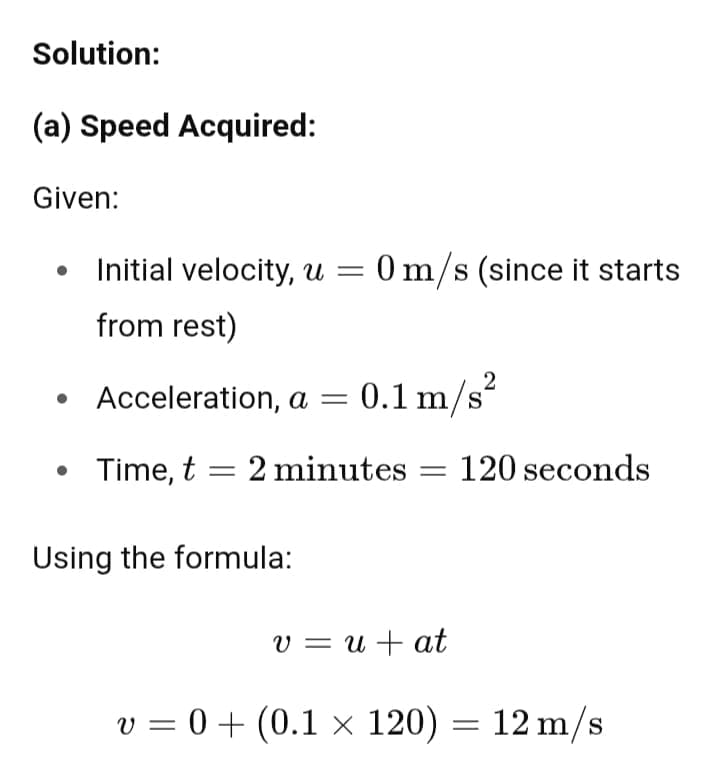
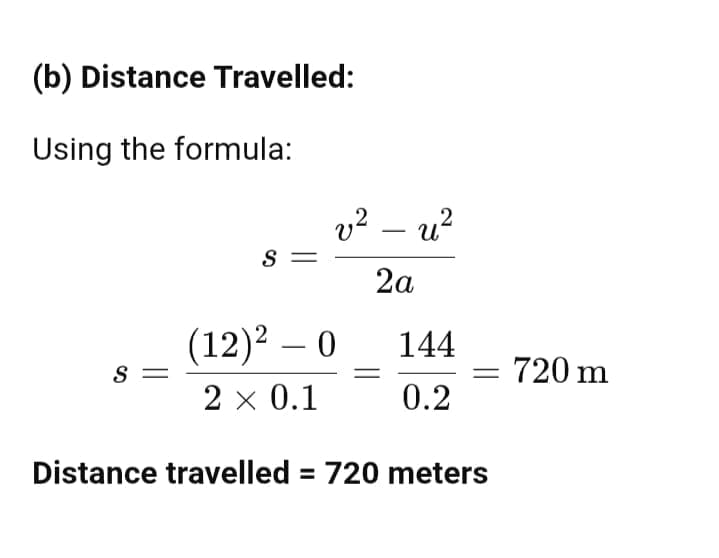
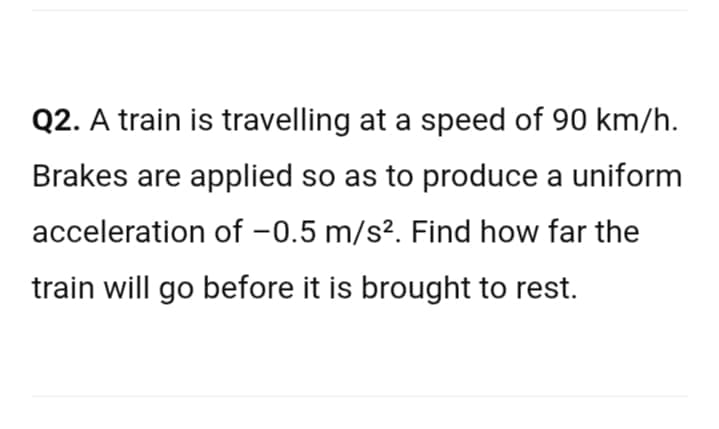
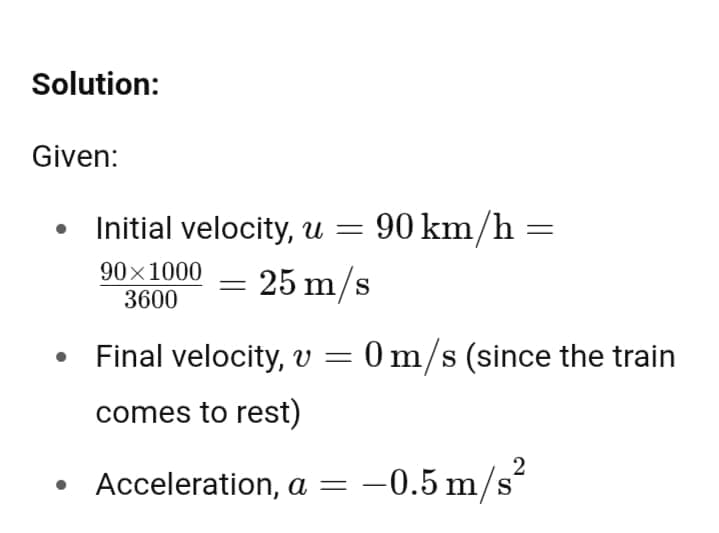
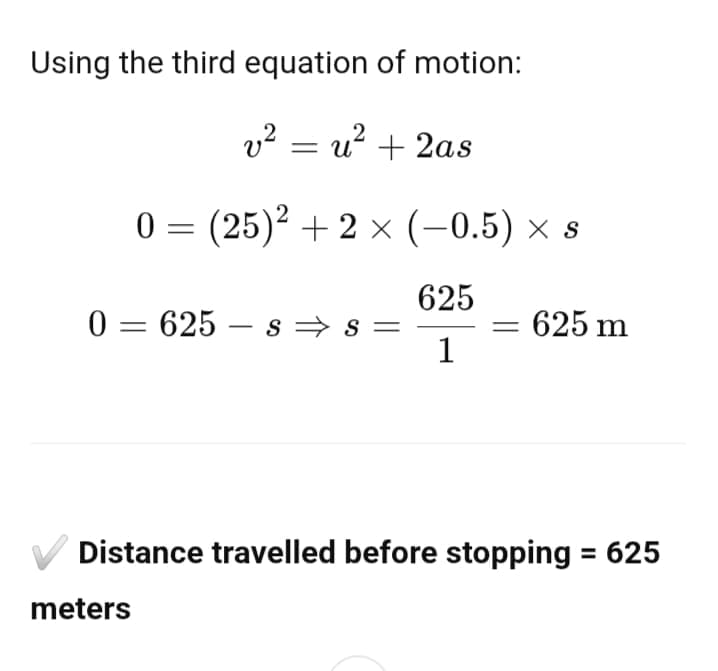
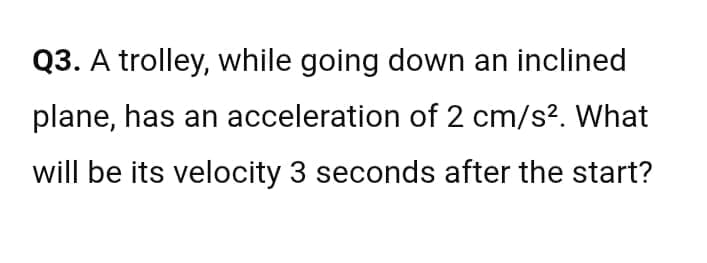
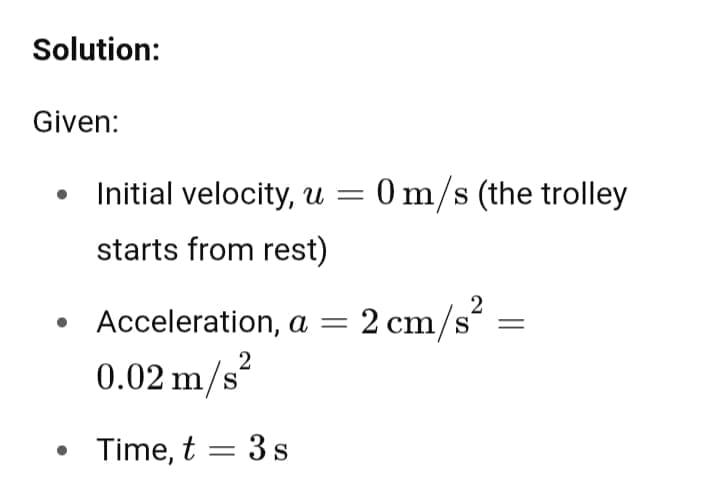
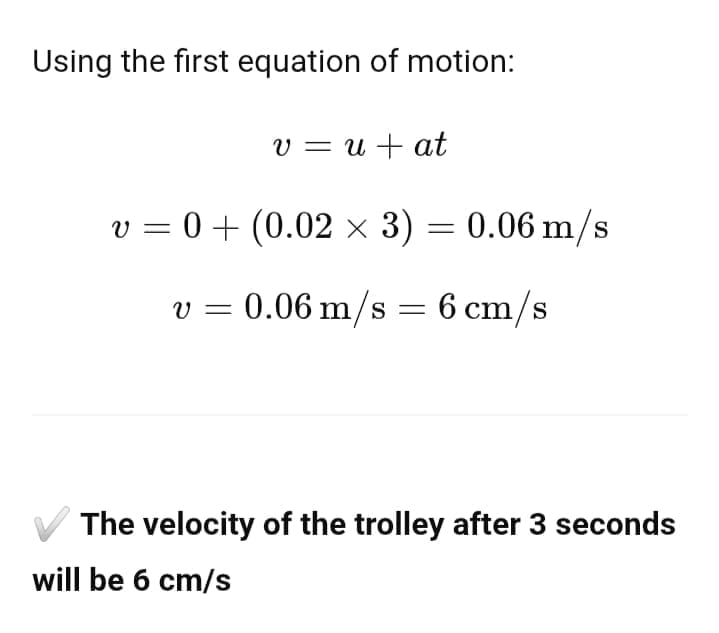
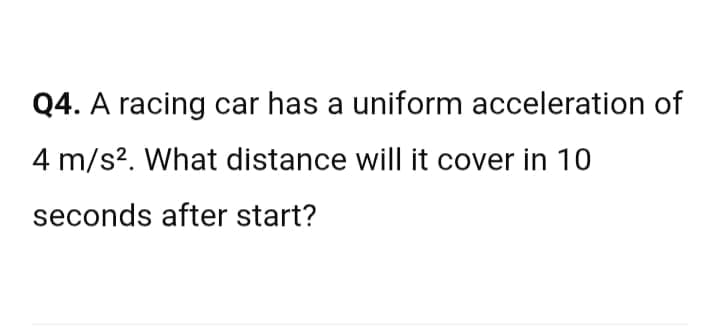
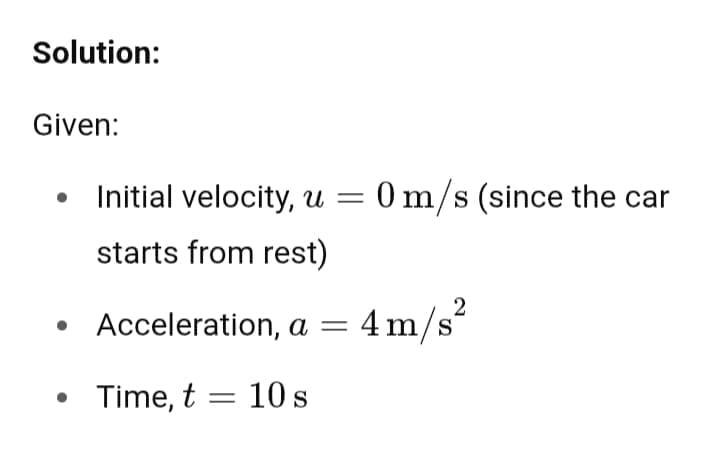
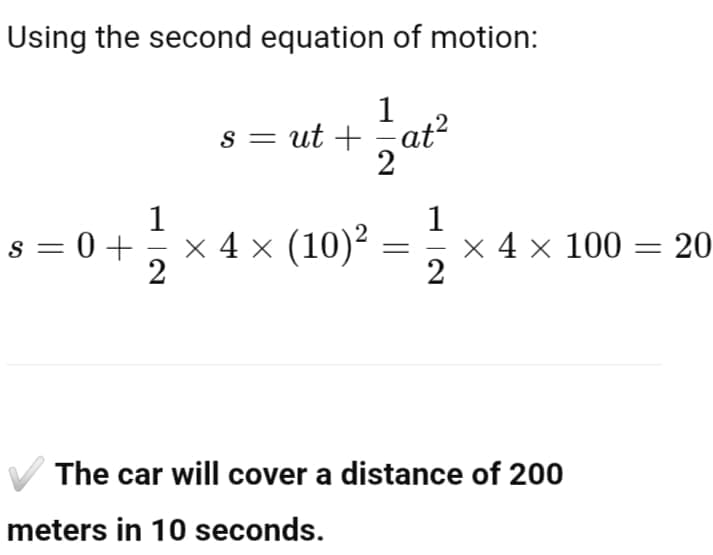
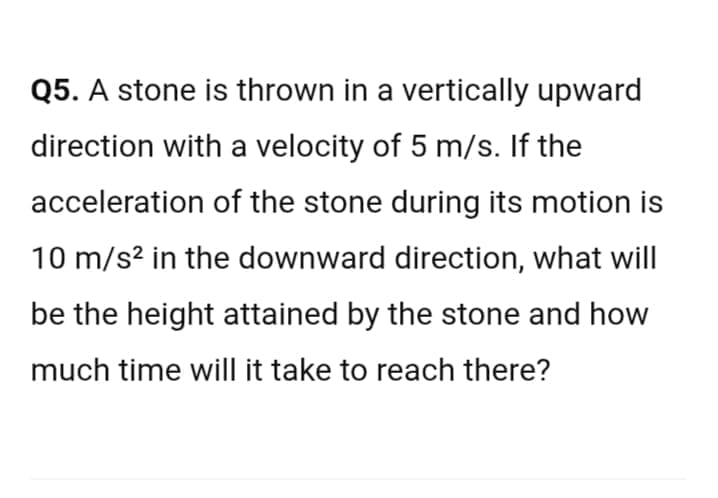

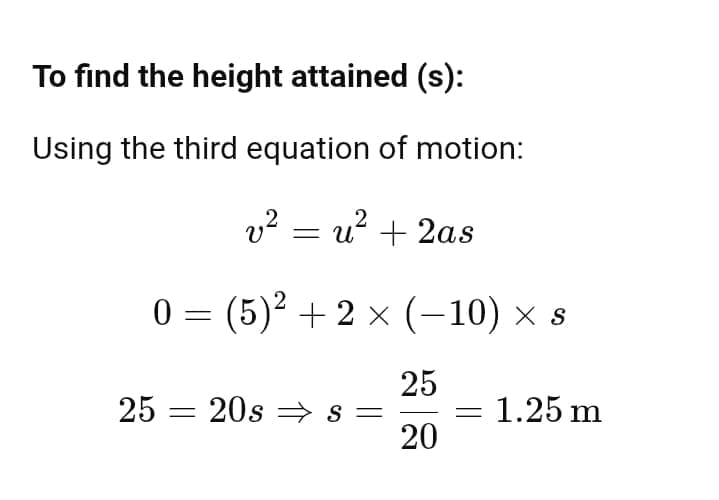
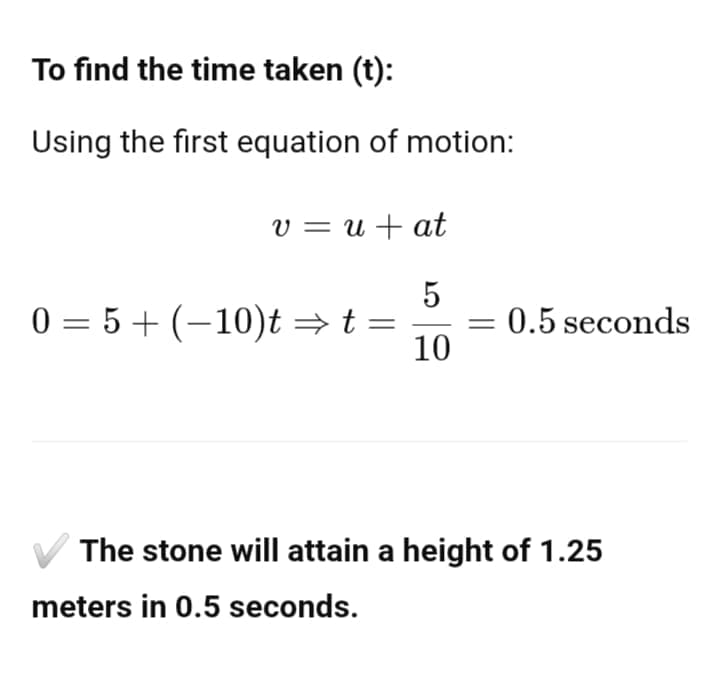
NCERT
Q. An athlete completes one round of a circular track of diameter 200 m in 40 seconds. What will be the distance covered and the displacement at the end of 2 minutes 20 seconds?
Solution
We are given:
Diameter of the track = 200 m
Time taken to complete one round = 40 s
Total time = 2 minutes 20 seconds = 140 seconds
[First, we find the distance of one round using the formula for circumference:]
Distance of one round of the track=Circumference = 2πr = 2 × (22/7) × 100 = 628.57 m
So, the athlete covers 628.57 m in 40 seconds.
Now, in 1 second, the athlete covers:
628.57 ÷ 40 = 15.71 m
In 140 seconds, distance covered = 15.71 × 140 = 2199.4 m (approximately 2200 m)
Now, number of rounds the athlete completed:
140 ÷ 40 = 3.5 rounds
After 3 full rounds, the athlete comes back to the starting point.
After half a round more, the athlete reaches the opposite side of the circle.
So, the displacement is equal to the diameter of the track, which is 200 m.
Final Answer:
Distance covered = 2200 meters
Displacement = 200 meters
Q. Joseph jogs from one end A to the other end B of a straight 300 m road in 2 minutes 30 seconds and then turns around and jogs 100 m back to point C in another 1 minute. What are Joseph’s average speeds and velocities in jogging
(a) from A to B and
(b) from A to C?
Solution
From A to B:
Distance = 300 m
Time = 2 min 30 sec = 150 sec
Displacement = 300 m (straight line from A to B)
From A to C:
Distance = 300 m (A to B) + 100 m (B to C) = 400 m
Time = 2 min 30 sec + 1 min = 150 + 60 = 210 sec
Displacement = 300 – 100 = 200 m (from A to C in a straight line)
We use the formulas:
Average speed = total distance ÷ total time
Average velocity = total displacement ÷ total time
(a) From A to B:
Average speed = 300 ÷ 150 = 2 m/s
Average velocity = 300 ÷ 150 = 2 m/s
(b) From A to C:
Average speed = 400 ÷ 210 ≈ 1.90 m/s
Average velocity = 200 ÷ 210 ≈ 0.95 m/s
Final Answer:
(a) Average speed = 2 m/s, Average velocity = 2 m/s
(b) Average speed = 1.90 m/s, Average velocity = 0.95 m/s
